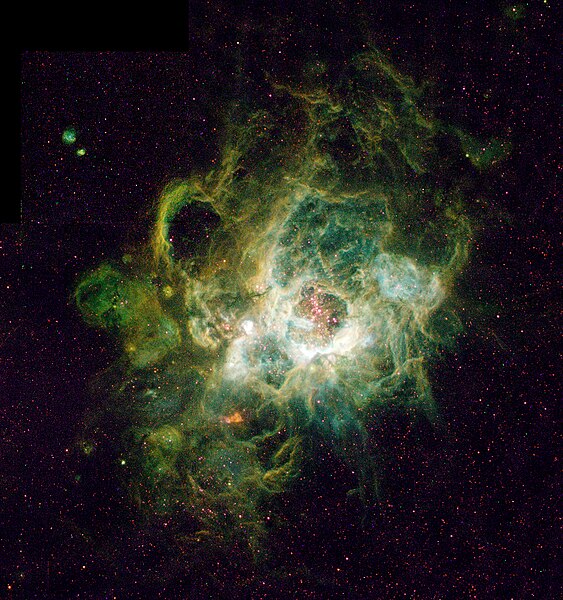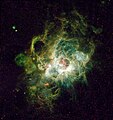Faili:Nursery of New Stars - GPN-2000-000972.jpg

Ukubwa wa hakikisho: piseli 563 × 600. Ukubwa zingine: piseli 225 × 240 | piseli 450 × 480 | piseli 721 × 768 | piseli 1,127 × 1,201.
Faili halisi (piseli 1,127 × 1,201, saizi ya faili: 2.42 MB, aina ya MIME: image/jpeg)
Historia ya faili
Bonyeza tarehe/saa kuona faili kama ilivyoonekana wakati huo.
| Tarehe/Saa | Picha ndogo | Vipimo | Mtumiaji | Maelezo | |
|---|---|---|---|---|---|
| sasa hivi | 18:12, 8 Agosti 2019 |  | 1,127 × 1,201 (2.42 MB) | BevinKacon | Reverted to version as of 01:11, 9 April 2009 (UTC) bad upscale by new user |
| 13:38, 3 Agosti 2019 |  | 1,690 × 1,800 (2.84 MB) | Armin3636 | بالا بردن کیفیت | |
| 12:08, 29 Julai 2019 |  | 1,024 × 1,091 (1.21 MB) | Armin3636 | بارگذاری کامل پرونده | |
| 01:11, 9 Aprili 2009 |  | 1,127 × 1,201 (2.42 MB) | BotMultichillT | {{Information |Description={{en|1=This is a Hubble Space Telescope image (right) of a vast nebula called NGC 604, which lies in the neighboring spiral galaxy M33, located 2.7 million light-years away in the constellation Triangulum. This is a site where |
Matumizi ya faili
Ukurasa huu umeunganishwa na faili hili:
Matumizi ya faili ulimwenguni
Wiki nyingine hutumia faili hizi:
- Matumizi kwa af.wikipedia.org
- Matumizi kwa anp.wikipedia.org
- Matumizi kwa an.wikipedia.org
- Matumizi kwa ar.wikipedia.org
- Matumizi kwa arz.wikipedia.org
- Matumizi kwa ast.wikipedia.org
- Matumizi kwa az.wikipedia.org
- Matumizi kwa ba.wikipedia.org
- Matumizi kwa be.wikipedia.org
- Matumizi kwa bg.wikipedia.org
- Matumizi kwa bn.wikipedia.org
- Matumizi kwa bs.wikipedia.org
- Matumizi kwa ca.wikipedia.org
- Matumizi kwa ceb.wikipedia.org
- Matumizi kwa ce.wikipedia.org
- Matumizi kwa cs.wikipedia.org
- Matumizi kwa da.wikipedia.org
- Matumizi kwa de.wikipedia.org
- Matumizi kwa de.wikibooks.org
- Matumizi kwa diq.wikipedia.org
- Matumizi kwa el.wikipedia.org
Tazama matumizi zaidi ya kimataifa ya faili hii.

